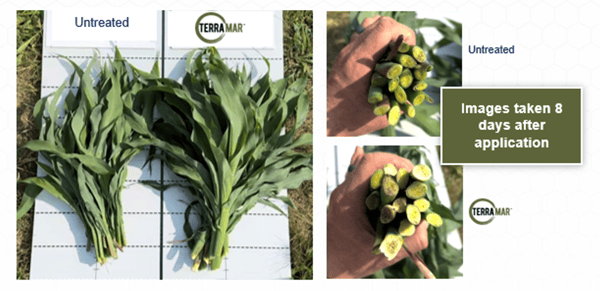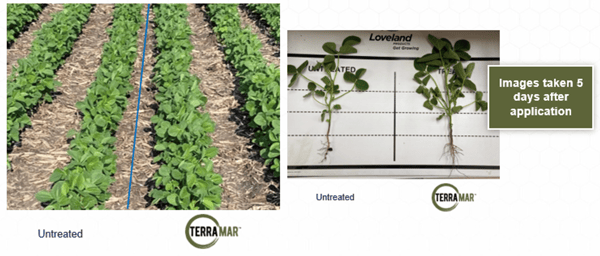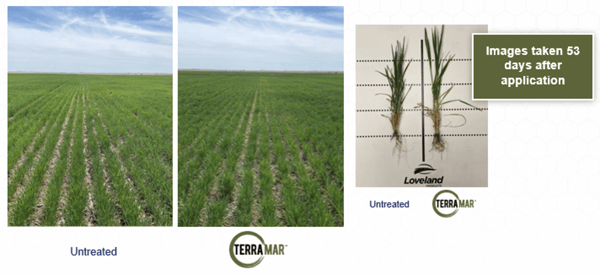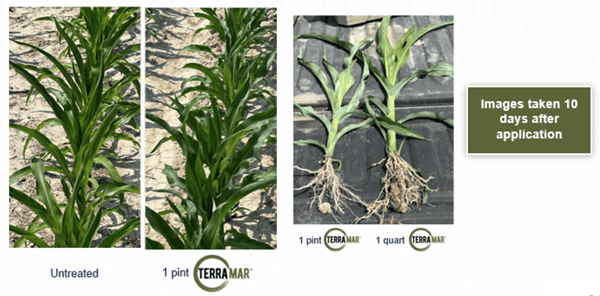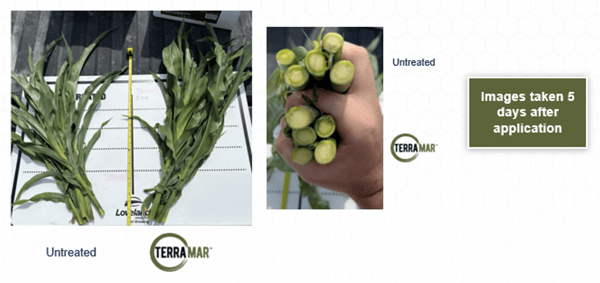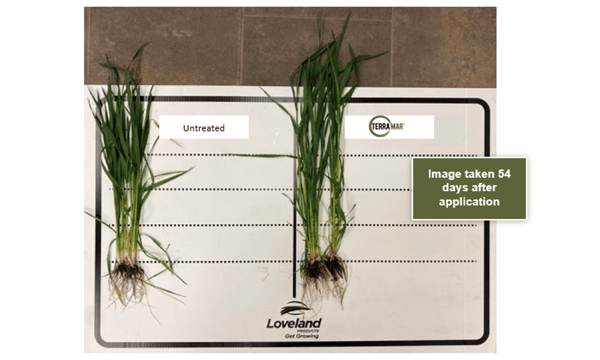 How do in-season foliar applications help crops achieve or preserve their yield potential?
How do in-season foliar applications help crops achieve or preserve their yield potential?
Watch our on-demand webinar, "Preserving Yield Potential with Proactive Foliar Applications," to learn:
- How foliar applications help growers preserve yield potential
- How foliar-applied TERRAMAR increases nutrient uptake and minimizes the potential impact of weather-related stress in a broad range of crops
- Details from Advanced Agrilytics' on-farm trials testing early post applications of TERRAMAR on corn
Guest speaker AJ Woodyard, the research agronomy lead for Ag Ingenuity Partners (the independent research arm of Advanced Agrilytics), presents some of the key findings from TERRAMAR corn trials conducted by Advanced Agrilytics during the 2024 season. Key takeaways from the trials, in which a V6 foliar application of TERRAMAR was evaluated on ten farms across Iowa, Illinois, Indiana and Ohio and compared to a control, include increased crop uptake of nitrogen and phosphorus, increased sucrose concentration in the plant and yield benefits in both water-limited and stable environments where TERRAMAR was applied.
A combination of two unique technologies, TERRAMAR delivers increased nutrient uptake and enhanced stress mitigation, which can optimize plant health and contribute to enhanced yield. The carbon-based technology (CBT) in TERRAMAR, which is derived from biologically converted leonardite, enhances nutrient uptake and photosynthetic capacity, providing key carbon derivatives for additional energy to optimize plant performance. This is complemented by TERRAMAR's marine-based technology (MBT), a formulation of biologically extracted kelp, which improves crop tolerance to abiotic stresses such as heat, cold, dry conditions and salt.
Multiple field trials validate the effectiveness of TERRAMAR as an in-season addition to foliar nutritional or crop protection programs in a wide variety of crops, including corn, soybeans, wheat, grain sorghum, cotton, alfalfa, lettuce, onions, potatoes and sugarcane.
TERRAMAR is available from Loveland Products through Nutrien Ag Solutions.
Watch the webinar today to learn how TERRAMAR can help preserve yield potential through improved crop nutrient uptake and enhanced abiotic stress tolerance.





![[Watch] Preserving Yield Potential with Proactive Foliar Applications](https://blog.agricen.com/hubfs/05-25-Foliar-webinar-1200x628-watch.jpg)








![[Interview] A New Advancement in Sustainable Nitrogen Management](https://blog.agricen.com/hubfs/Interview-nitrogen-mgmt.jpg)

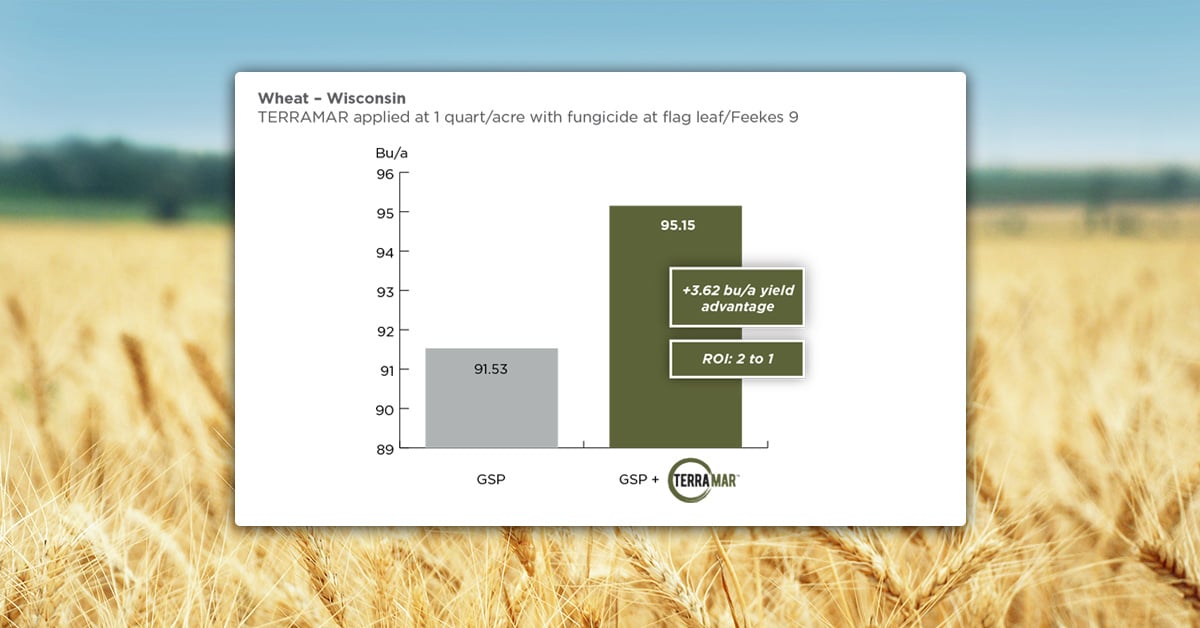






![[Watch] Opportunities for Enhancing Nutrient Availability with Extract](https://blog.agricen.com/hubfs/Extract-watch-now-1200px.jpg)
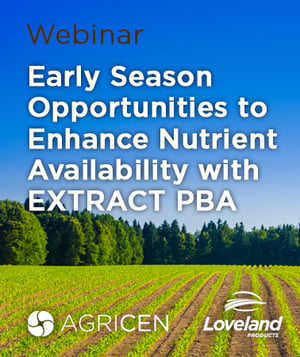

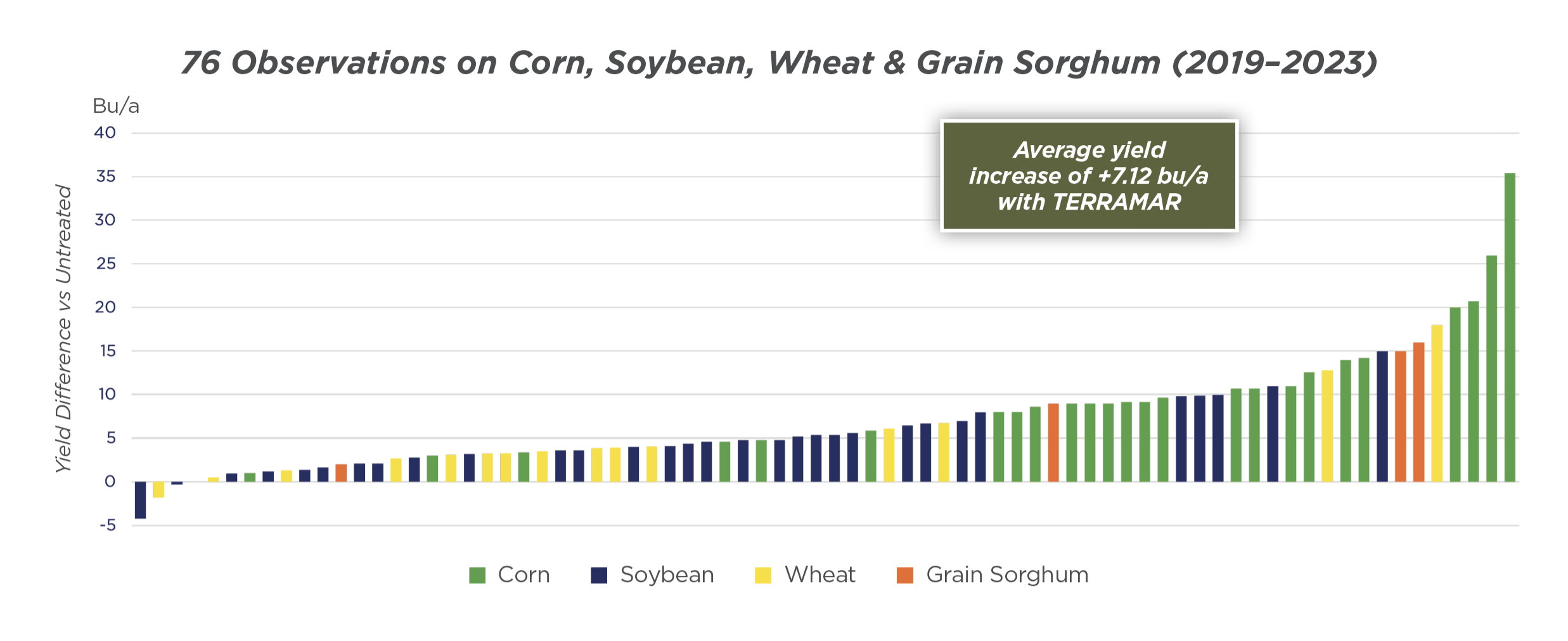
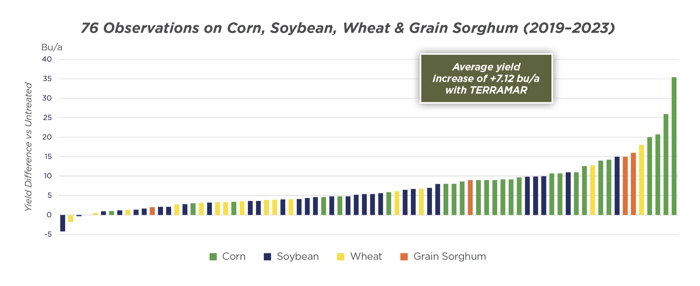


 Agricen's Scott Lay spoke with WITY Radio’s Dennis Michelsen about why pairing
Agricen's Scott Lay spoke with WITY Radio’s Dennis Michelsen about why pairing ![[Watch] Enhance Dry Fertilizer Efficiency to Maximize Yield & ROI](https://blog.agricen.com/hubfs/09-23-Webinar-Dry-Fertilizer-1200px-Watch-Now.jpg)


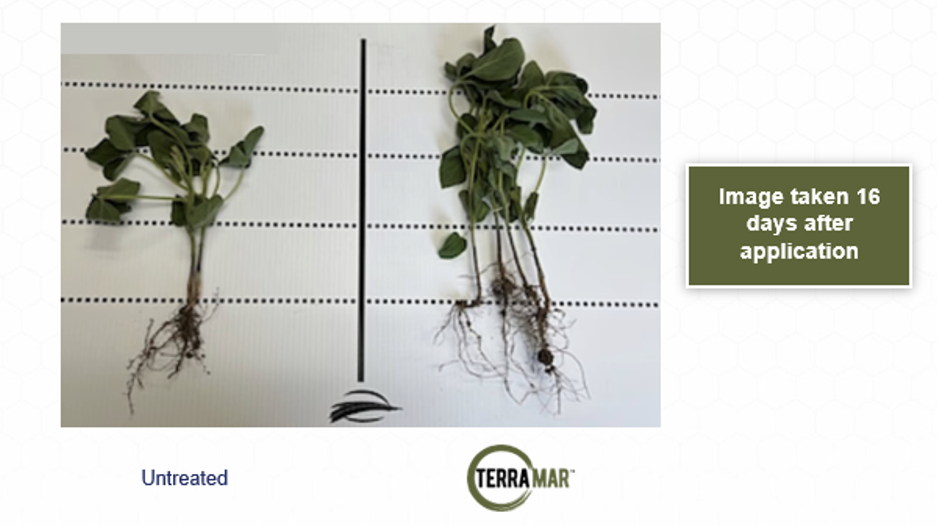
 Many agricultural areas across the United States are facing weather-related challenges, but there are still opportunities to make the most
Many agricultural areas across the United States are facing weather-related challenges, but there are still opportunities to make the most 